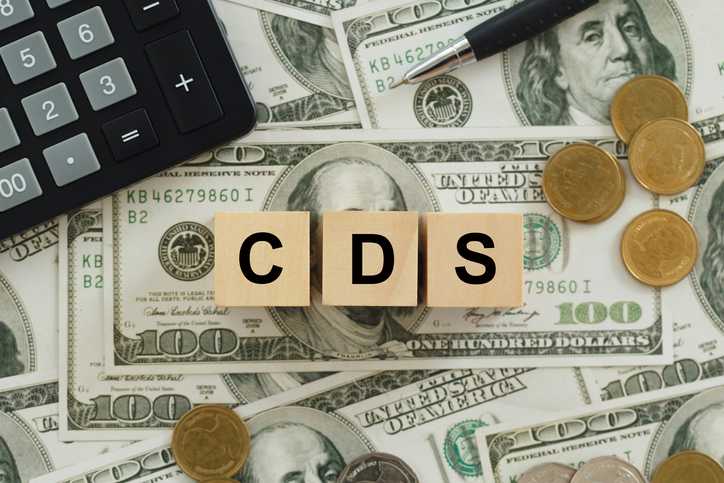
Rates of interest on certificates of deposit (CDs) are influenced by the Federal Reserve funds price. Because the Fed raises its rate of interest to scale back excessive inflation, most banks elevate the rate of interest paid to prospects who open deposit accounts, together with high-yield financial savings accounts, cash market accounts (MMAs), and CDs.
The interval from 1984 to the current day featured rates of interest on three-month CDs that peaked at 11.56% in July 1984, then declined to a low of 0.09% in June 2021. As of mid-July 2023 charges have rebounded to greater than 5%, with some banks and credit score unions paying as excessive as a 5.65% annual proportion yield (APY), relying on the time period and minimal deposit.
Understanding the historical past of deposit accounts over a few years will help you acquire the most effective CD charges, given present financial circumstances. It’s additionally vital to know the way CDs perform and the place to purchase them. Conventional CDs are financial savings accounts with fastened deposits and charges of return, with phrases starting from a month to a number of years. Banks and credit score unions promote them, together with brick-and-mortar establishments, comparable to CIT in addition to on-line banks, together with Quontic, Nationwide, Uncover® Financial institution, and others.
The graph under reveals how carefully CD charges—on this case, three-month charges—have adopted the federal funds price over time.

Supply: Board of Governors of the Federal Reserve System
With this overview in thoughts, here is a more in-depth have a look at how CD charges have shifted over time.
1984 to 1989
Following back-to-back recessions and former durations of excessive inflation, charges on three-month CDs climbed from nearly 9.5% in January 1984 to almost 12% in July earlier than falling to eight.6% by the tip of the yr. The roller-coaster journey continued for the last decade’s steadiness, with charges as little as 5.69% in 1986. All however one of many 9 months throughout this era that featured double-digit returns occurred in 1984 (the exception being March 1989). Those that may save obtained among the highest rates of interest accessible for the subsequent 4 many years. The top of the last decade noticed common three-month CD charges of 8.32%.
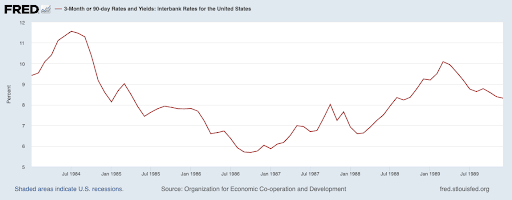
Supply: Board of Governors of the Federal Reserve System
1990 to 1999
Rates of interest on CDs fell within the ’90s as a consequence of decrease inflation and an bettering economic system. The best three-month CD price throughout this decade occurred in April 1990 and paid 8.42%. Nevertheless, by April 1993 the speed was simply 3.09%. From then till December 1999, charges rose to six.29% in December 1994, leveled out, and settled at 6.05% in December 1999.
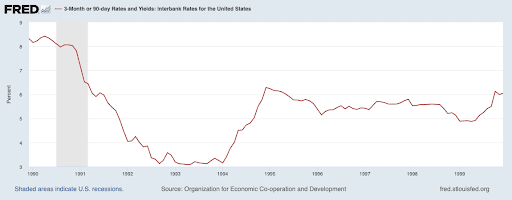
Supply: Board of Governors of the Federal Reserve System
2000 to 2009
In January 2000, three-month CDs paid rates of interest of 5.95%, peaking in June at 6.73%. Starting in November 2000, following the tip of the dot-com period, charges skilled a gradual decline, settling at 1.04% in June 2003. In July 2006, simply forward of the Nice Recession (2007 to 2009), three-month charges stood at 5.46%. By December 2009, they returned 0.22%.
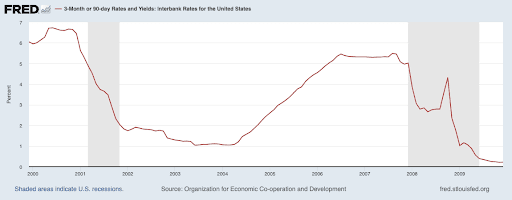
Supply: Board of Governors of the Federal Reserve System
2010 to 2019
Within the aftermath of the Nice Recession, CD charges fell to all-time lows. January 2010 noticed three-month charges averaging 0.20% APY. Charges stayed under 0.5% by means of November 2015. Because the Fed elevated its benchmark rate of interest between 2015 and 2018, CD charges slowly rose. By December 2018, the typical three-month CD yield had elevated to 2.69%. Total, nevertheless, the last decade noticed traditionally low CD charges.
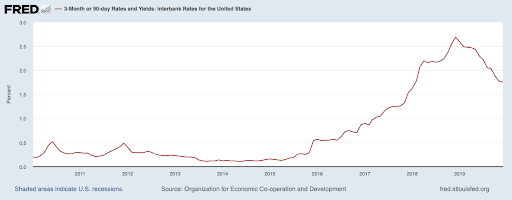
Supply: Board of Governors of the Federal Reserve System
2020 to 2023
The COVID-19 pandemic had a dramatic impact on the economic system. From February 2020 by means of Might 2020, charges on three-month CDs fell from 1.59% APY to 0.17%, the place they remained largely stage by means of December 2021. January 2022 noticed rising rates of interest that resulted in a good 5.15% APY in Might 2023.

Supply: Board of Governors of the Federal Reserve System
TIME Stamp: CDs are extra for saving than investing
Finally, CDs are extra for saving than investing. A five-year time period CD with a excessive rate of interest generally is a protected financial savings account for a future giant buy, comparable to a automotive or home. A assured rate of interest, Federal Deposit Insurance coverage Company (FDIC) insurance coverage—and the disincentive to take the cash out to keep away from early withdrawal penalties—make a long-term CD an nearly excellent financial savings instrument. That is very true if the inflation price whenever you money in your CD is way decrease than whenever you took it out, giving an additional enhance to the shopping for energy of your earnings.
Historical past teaches us that charges are highest throughout inflationary durations. Nonetheless, you don’t need to lock in a price which will go even larger if inflation continues. Charges have been on the rise, however for the way lengthy?
This chart from the U.S. Bureau of Labor Statistics reveals that the Client Value Index (CPI) inflation measure has been declining for the previous yr.

Supply: U.S. Bureau of Labor Statistics
In case you consider the CPI will proceed to fall, inflicting the Fed to pause and even decrease its funds price because it makes an attempt to realize its aim of two% inflation, locking in a high-interest long-term price is smart, as CD rates of interest will extra possible than not additionally decline. In case you assume the run isn’t fairly over, and inflation could stall or flip round, chances are you’ll need to follow short-term CDs, say one, two, or three months, whereas hoping for even larger charges later in 2023 or the early a part of 2024.
Regularly requested questions (FAQs)
What was the best CD price?
The mix of back-to-back recessions and excessive inflation resulted in charges of 17.52% on three-month CDs in 1981. When inflation rises, long-term CD charges are sometimes not a very good funding.
Why have CD charges been so low in recent times?
The COVID-19 pandemic resulted in CD charges under 1%. Low inflation and federal funds charges starting from 0% to 0.25% have stored charges low as a result of CD rates of interest rise with demand for deposits. Extra just lately, nevertheless, with inflation and the Fed funds price each rising, CD charges are up once more.
What predictions might be made about the way forward for CD charges based mostly on historic traits?
CD charges rise because the federal funds price rises in response to growing inflation. Locking in excessive charges long run might be useful if inflation begins to fall. In any other case, rising inflation can wipe out a lot of the good points from high-interest-rate CDs.
What are the traits in long-term vs. short-term CD charges?
Presently, short-term CD charges are larger than these on long-term CDs. That is an uncommon inverted-rate atmosphere, as banks are likely to reward long-term deposits with larger charges. Over the subsequent few years investor expectations of weak development and sluggish inflation will proceed to feed this development.
How do CD charges correlate with inflation over time?
Typically talking, CD charges rise with inflation. This isn’t a direct correlation, because the federal funds price will increase in response to inflation, leading to rising CD charges as banks attempt to encourage deposits.
